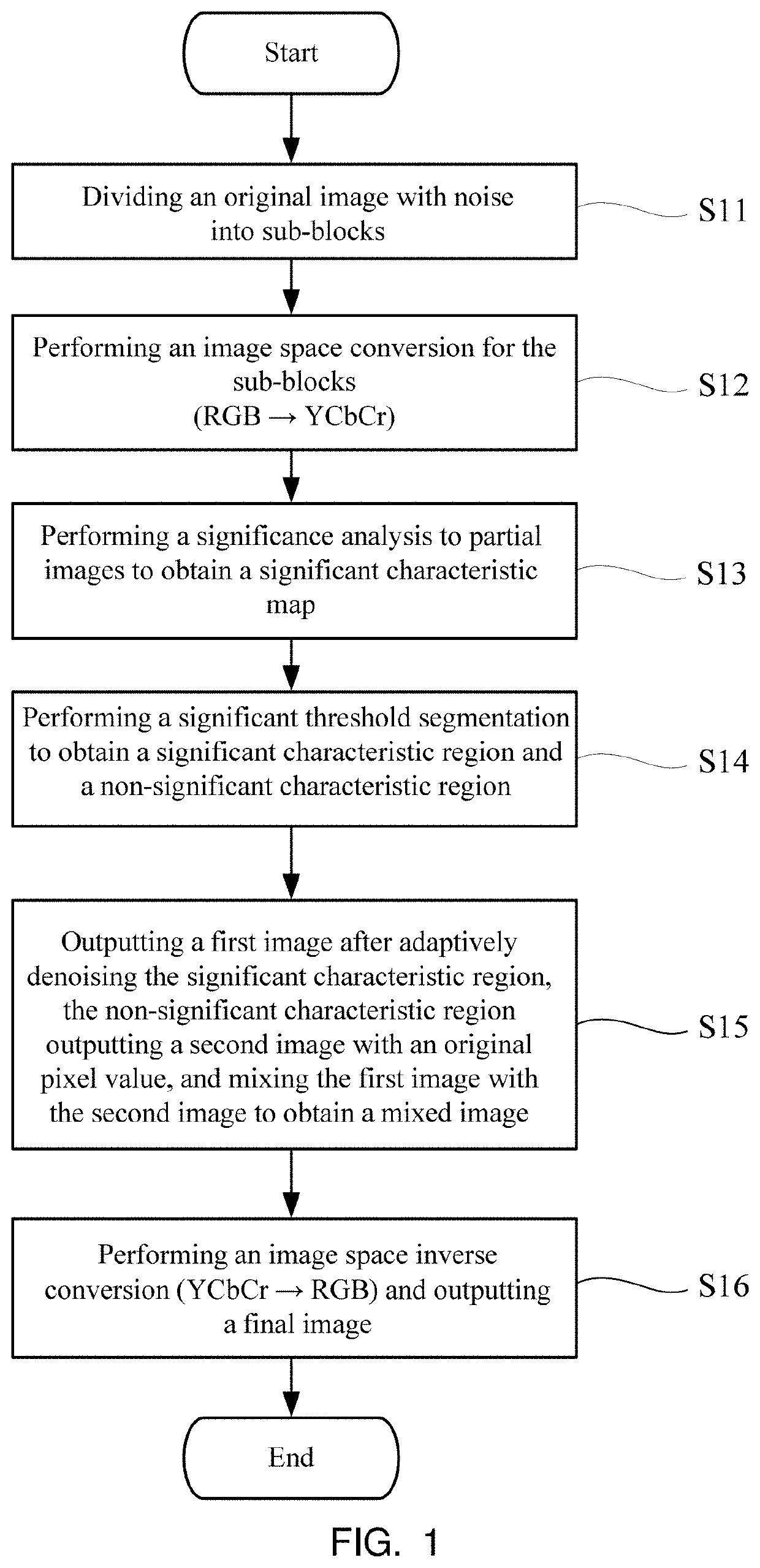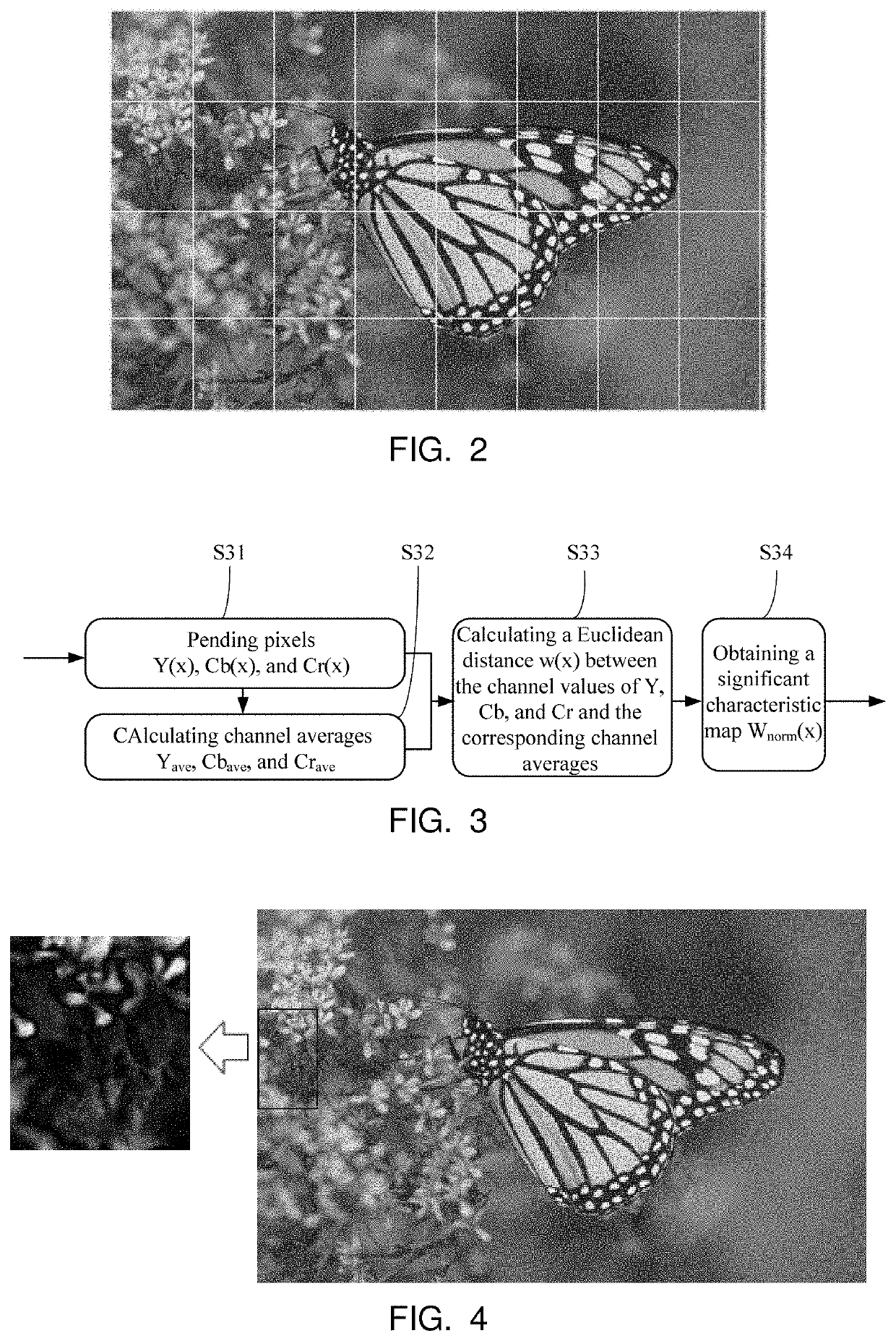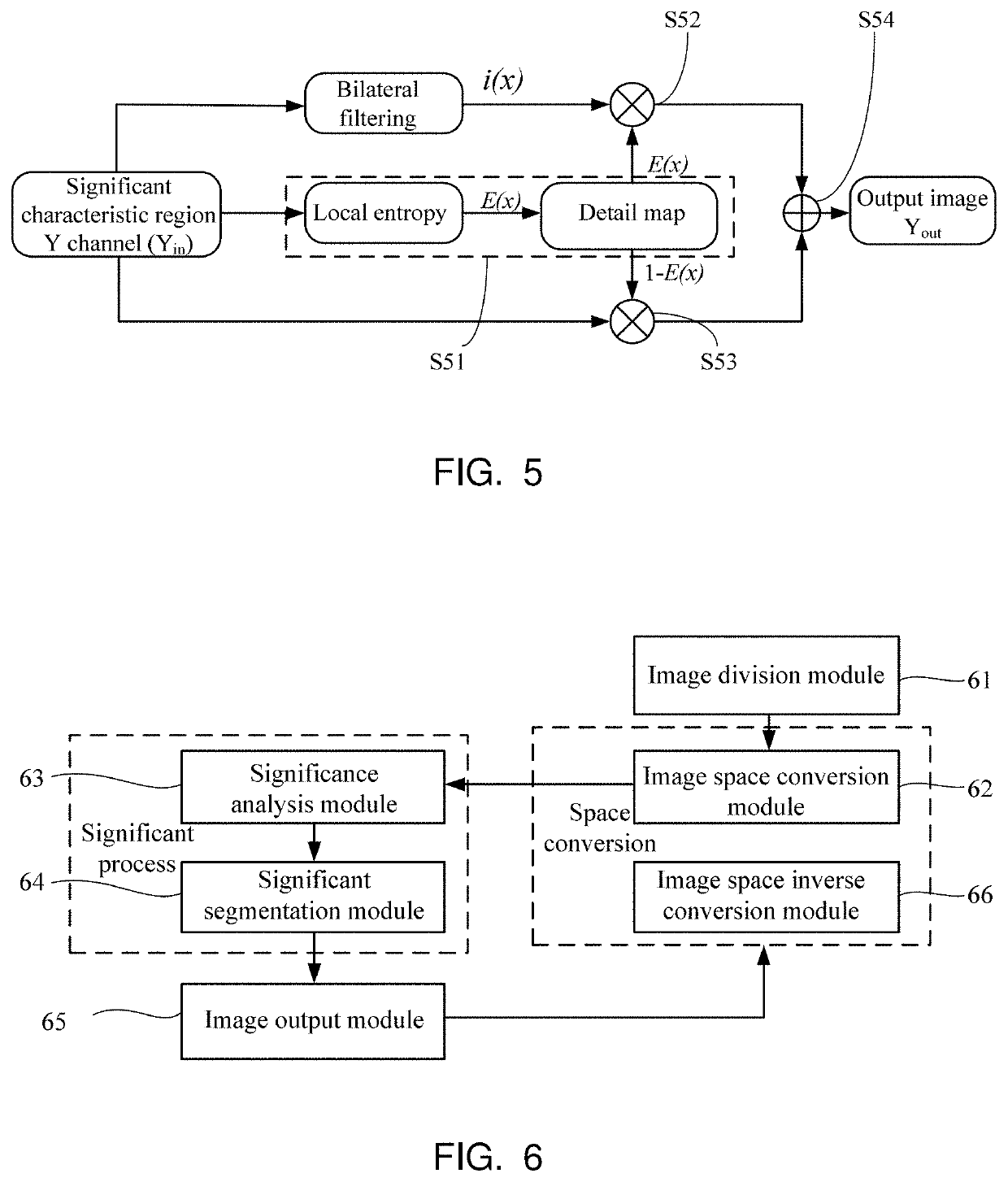Image adaptive noise reduction method and device thereof
a noise reduction and image technology, applied in image enhancement, image analysis, instruments, etc., can solve problems such as block boundaries that may not be continuous, and achieve the effects of reducing the perceived quality of people, reducing the noise reduction of non-significant regions, and improving image display quality
- Summary
- Abstract
- Description
- Claims
- Application Information
AI Technical Summary
Benefits of technology
Problems solved by technology
Method used
Image
Examples
Embodiment Construction
[0016]The specific structural and functional details disclosed herein are merely representative and are used for the purpose of describing the exemplary embodiments of the present invention. However, this application may be embodied in many alternative forms and should not be construed as being limited only to the embodiments set forth herein.
[0017]In the description of the present invention, it is to be understood that the terms “center,”“longitudinal,”“lateral,”“length,”“width,”“thickness,”“upper,”“lower,”“front,”“rear,”“left,”“right,”“vertical,”“horizontal,”“top,”“bottom,”“inner,”“outer,”“clockwise,”“counterclockwise,” and the like are used in the orientations and positional relationships indicated in the drawings for convenience in describing the present invention and for simplicity in description, and are not intended to indicate or imply that the referenced devices or elements must have a particular orientation, be constructed in a particular orientation, and be operated in a ...
PUM
 Login to View More
Login to View More Abstract
Description
Claims
Application Information
 Login to View More
Login to View More - R&D
- Intellectual Property
- Life Sciences
- Materials
- Tech Scout
- Unparalleled Data Quality
- Higher Quality Content
- 60% Fewer Hallucinations
Browse by: Latest US Patents, China's latest patents, Technical Efficacy Thesaurus, Application Domain, Technology Topic, Popular Technical Reports.
© 2025 PatSnap. All rights reserved.Legal|Privacy policy|Modern Slavery Act Transparency Statement|Sitemap|About US| Contact US: help@patsnap.com



